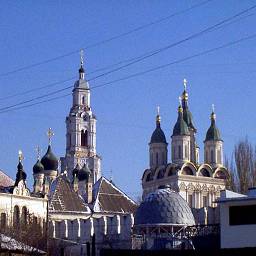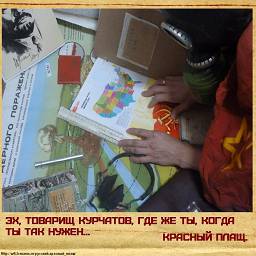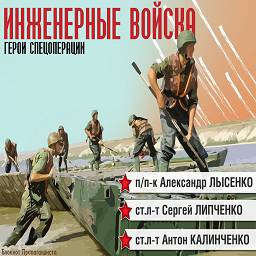Путь:
Quick Links
Language [ ENGLISH РУССКИЙ ]
Search
Продвинутый поиск
New Materials
- Ease of Implementation and Efficiency: The Advantages of DOBOT Collaborative Robots 2025-09-27
- Comprehending Viagra Soft: Advantages, Drawbacks, and Application 2025-01-24
- Affordable Instagram Growth with InstagFollowers.shop: Free Followers and Guaranteed Results 2024-12-18
- Buy instagram followers 2020-09-09
- FISCAL FEDERALISM THE CANADIAN EXPERIENCE 2020-03-22
- Analysis of differentiation of socio-economic development of the Russian regions 2020-03-22
- Economic development in the Russian regions: institutional and macroeconomic problems. 2020-03-22
- Russia's North: Economic Problems of Development 2020-03-22
- Problems of Fiscal Federalism in Russia 2020-03-22
- REGIONAL ASPECTS OF THE FEDERAL ECONOMIC POLICY 2020-03-22
- THE TELEVISIONS PROJECT 2020-03-22
- Journeys into History Through the Future 2020-03-22
- Artists Bring the Computer to Life 2020-03-22
- Culture in the Upcoming Millenium 2020-03-22
- What is a work of telecommunicative art 2020-03-22
Картинка недели
Union maniac
Evaluation section:
0
Union Punk is a wide circle of like-minded people who respect the era of the Soviet Union.
In many cities and countries of the former USSR there were fans who willingly share their memories with the same fans.
Proud of old times, constantly compare reality with the past.


Категории
HISTORY OF ST. PETERSBURG
Date of publication: 2017-10-18 12:07:03Дата модификации: 2017-10-18 12:07:03
Views: 1532
Author: admin
ST. PETERSBURG IS INEXORABLY linked with the personality of its founder, Tsar Peter I. Peter was the grandson of Mikhail Romanov, founder of the Romanov dynasty which ruled Russia from 1613 until 1917. The son of Tsar Alexis (1645-1676) from his second marriage, Peter rose to power despite the meddling of jealous relatives from Alexis' first marriage. The most menacing of these was Sophie, Alexis' daughter and the older sister of Peter's physically and mentally retarded half-brother Ivan. Ivan and Peter, both kids, were declared co-tsars in 1681 and then sent off to play while Sophie ruled as regent. Whereas Ivan remained unfit for duty as a ruler for his entire short life, Peter learned military skills and built up loyalty in the most influential regiments during his half-sister's regency. In 1689 Peter returned to Moscow, deposed her, and shipped her off to a convent.
Peter inherited a Russia that was too backward for his taste. Trade was relatively undeveloped due to the lack of access to a warm-water port (the Baltic belonged to the Swedes and the Black Sea was in Turkish hands) and the populace, even the aristocracy, was for the most part uneducated. Peter was determined to modernize Russia regardless of the cost, and immediately after Ivan's death in 1696 left him as sole sovereign he took off incognito on a two-year fact-finding and recruitment mission across Europe.
Peter's first goal was to turn Russia into a formidable naval power. He had seen navies and wanted one too. With this in mind he attacked both north and south, taking the Azov Sea from the Turks in the south in 1696 and then in 1703 driving the Swedes from the Neva delta, seizing the fortress-town Noteburg and renaming it Schlüsselburg (now called Petrokrepost). In order to strengthen the northern position Peter decided to build a second fortress on the Neva delta.
He Built it on a Swamp
On May 16, 1703, Peter laid the first stone of the fortress he named St. Petersburg in honor of St. Peter, guardian of the gates of Heaven. Across the river from the fortress Peter built a shipyard (the Admiralty). Peter then figured why not build a city around his little fortress and shipyard, providing Russia with a trading port and a "window onto Europe" through which Russia could hopefully catch Poland in her underwear.
Geological conditions presented Peter with a formidable challenge. In many areas the ground was so soft that huge wooden planks had to be laid as foundations to prevent buildings from sinking. During the initial phases of construction thousands of peasants and workers died of malaria or scurvy and many were picked off by marauding wolves, earning Petersburg the epithet "the city laid on bones." In 1712 Peter decided to make St. Petersburg Russia's capital and required the aristocracy to move here and build lavish homes for themselves (at their own expense), as well as chip in to help build government buildings.
Petersburg after Peter
The 18th century saw Petersburg develop not only into Russia's political and economic center but into its cultural center as well. Russian and European culture met in St. Petersburg, with more and more members of the aristocracy studying abroad and learning foreign languages at home. While the rest of Russia remained mired in backwardness, Petersburg flourished under the auspices of the nobility and the merchant classes that were based here. By the end of the 18th century secular literature and art (previously forbidden) had begun to develop, setting the stage for the tremendous flowering of the arts during the 19th century.
A Few Intrigues
For seventy-one years after Peter the Great's death Russia was ruled almost exclusively by women. Having had his first son imprisoned and killed (some say with his own hands) and losing his second son to a premature natural death, Peter, left without a male heir, decreed that the emperor could name his successor as he pleased without regard to hereditary concerns, and thus did his second wife, Catherine I, succeed him to the throne. She ruled from 1725 until 1727, followed by Peter the Great's grandson Peter II who died of smallpox in 1730 at the age of seventeen.
The throne then passed to Anna, the corpulent daughter of Peter the Great's half-brother Ivan. She ruled until 1740, nominating her older sister's grandson, the two-month old Ivan VI, to succeed her. At first the Empress Anna's favorite, Ernst Büren, was named regent but he was deposed within three weeks and Ivan VI's mother (who was also called Anna) was given the regency. After a year the Grand Duchess Elizabeth, Peter the Great's last surviving child, seized power and had the one-year old Ivan VI locked up in the Schlüsselburg Fortress with instructions to kill him if he tried to escape. Which just goes to show that a royal birth does not necessarily entitle one to a life of ballroom dancing, military parades, and a quiet retirement in Monte Carlo.*
Lesson One: Be Nice to Your Wife
Despite her reputation as an insatiable nymphomaniac, Elizabeth had no children and ended up leaving the throne to her nephew, Charles Peter Ulrich of Holstein (Peter III). Peter assumed the throne in January 1762 and within six months he had managed to alienate everyone with his Prussophilia, offenses against the Orthodox Church, and his boyish obsession with guns and the military. His wife, the German born Sophie of Anhalt-Zerbst, took to Russia much better than Peter, learning the language and adopting Orthodoxy. Sophie (rechristened Catherine) had Peter III arrested in June 1762 and forced him to abdicate in her favor. One week later he died in somewhat mysterious circumstances.
Catherine the Great
Of all the empresses, Catherine II (later known as Catherine the Great) deserves special note. She combined an avid personal interest in Enlightenment ideas (she was quite well-read and corresponded with Diderot, Voltaire, and d'Alembert) with the unbending conviction that autocracy was the only thing that could handle Russia. Under her rule Russia experienced the "golden age of the nobility" where the aristocracy was permitted to forego state service and concentrate on their personal affairs. The Russian Empire expanded into the Crimea and, together with Prussia and Austria, partitioned Poland three times, controlling Warsaw until 1918. Under Catherine, Russia grew into the great European power Peter the Great had envisaged one hundred years before. And though it is common knowledge that she had quite a voracious sexual appetite, the legend about the horse is just not true.
Lesson Two: Be Nice to Your Son
Catherine's son, Paul I, assumed the throne in 1796. Like Peter III, Paul exhibited a manic love of all things military, drilling his troops incessantly and even becoming Grand Poobah of the Knights of Malta. His unpredictability and paranoia made him both feared and hated by the court, and in 1801 he was deposed by guard officers and disaffected courtiers with the tacit agreement of his eldest son, Alexander. During the coup Paul was accidently killed by the intoxicated conspirators.
How One Little Frenchman can Ruin Your Day
Having observed the political lessons of the 18th century (notably the French Revolution and its rather unhealthy consequence for a particular monarch), Alexander I recognized the need to overhaul his country somehow. He was distracted however by Napoleon who in 1812 sent an army of six hundred thousand in Alexander's general direction, eventually taking Moscow. That winter the Russians, under the leadership of the brilliant Marshal Kutuzov, turned the tide against the pesky little Corsican, destroying most of the invading army and marching victoriously into Paris. After the victory Alexander went weird, becoming so wrapped up in what he saw as his divine mission to preserve autocracy on the planet that reforms became of little concern to him and nothing major was accomplished. Still, the economic and social problems Russia faced did not disappear and many of the officers who saw Europe during the war grew increasingly resentful at their lack of say in how things were run in Russia.
The Decembrists' Uprising
Anti-authoritarian sentiments burst into open demonstration when Alexander died in December 1825. The throne passed to his younger brother, Nicholas I, who had a reputation as an autocratic hard-ass. A group of disgruntled army officers gathered in Senate Square, proclaimed their loyalty to Nicholas' older brother, Constantine, and demanded such outrageous things as representation in the government and an end to serfdom. Nicholas responded by bringing in loyal troops and forcing the rebels (later known as the Decembrists) to surrender. They were sent to the dungeons at the Peter and Paul Fortress, the ringleaders were hanged, and that was the last Russia heard of reform for a while.
There is no question that this revolt, combined with the waning of autocracy across Europe, profoundly affected Nicholas I's way of thinking. Fearing revolution in any shape or form, his reign became intensely repressive with censorship heavily enforced, education abroad curtailed, and a system of secret police and internal spies put into operation. Nonetheless Petersburg was buzzing with underground discussion groups working out alternative ideas and philosophies, and Russia experienced a golden age of literature with Pushkin, Lermontov, and Gogol writing their seminal works and Dostoevsky and Turgenev launching their literary careers.
Serf's Up
When Alexander II assumed the throne in 1855 Russia had more problems than an epileptic tight-rope walker. Nicholas' imperialist pretensions towards Turkey left Russia embroiled in the embarrassing Crimean War with France and Britain, and discontent both among the upper classes and the serfs was becoming more evident (during Nicholas' reign there had been over five hundred peasant uprisings). A series of reforms including the abolition of flogging in the army and some judicial and educational reforms culminated in the abolition of serfdom in 1861. After an assassination attempt on Alexander II in 1866, the reform period gradually faded and Russia slid back into conservatism.
During the 1860s and 1870s revolutionary groups began to flower in St. Petersburg, mostly among students. The 1860s were the heydey of the nihilists, 19th century hippies who offended people with their hair styles and free-loving attitudes. In the 1870s populism was the rage, and young starry-eyed revolutionaries "went to the people" (i.e. travelled to peasant communes in an attempt to put their theories about the political potential of the Russian countryside into practice) only to have the people tell them to get lost. Anarchists and terrorists also appeared, and it was one of the latter (representing an extremist group called People's Will) that assassinated Alexander II on March 1, 1881.
No More Mr. Nice Guy
The last two tsars rejected the idea that the autocracy needed reforming from above and so the gap between the authorities and the people continued to widen. Tsar Alexander III hunted out terrorists and revolutionaries, tightened censorship, and reined in the educational and judicial systems. It was also at this time that Russia embarked on the path of industrialization with massive factories appearing in the Petersburg area. Working conditions were miserable and social tension continued to grow as more and more people came to believe that only revolution could bring about social, economic, and political change.
The last tsar, Nicholas II, was not so much a bad man as just a Clark Kent when Russia needed a Superman, or at least an Aquaman. His wife, Alexandra, totally dominated him and together they were unprepared to deal with the tremendous crises that faced Russia. His reign was punctuated with one disaster after another, from worker and peasant uprisings to defeat in war with Japan, and his final rating as tsar suffers a lot from the fact that the four-hundred-year Romanov Dynasty ended during his reign.
The First Russian Revolution
The first major disaster happened on January 9, 1905. A crowd of workers led by the Orthodox priest Father Gapon marched to Palace Square with a peaceful petition asking for better working conditions. Troops opened fire on the marchers and in the ensuing panic about one hundred died and thousands were wounded in what came to be known as "Bloody Sunday." Even without U2 around to sing about it the country rose up in protest and there were mutinies, murders of landowners and industrialists, strikes, and enough general hubbub to force Nicholas to make some concessions in order to avert total disaster. The tsar issued the so-called "October Manifesto" which established a constitutional body (called the Duma) and promised civil rights and liberties to all, though Nicholas eventually went back on most of these promises and political tension continued to build until 1914 when an external threat gave him a temporary reprieve.
World War and Revolution
At the onset of World War I Russians heeded the call for unity in order to concentrate on the war effort, and in a show of anti-German feeling, St. Petersburg was given the more Russian sounding name of Petrograd. However, after a couple of years of drawn-out, inconclusive fighting the masses started getting restless once again. The government was essentially paralyzed as Nicholas had gone off to the front to oversee the war effort and his assertive wife had fallen under the influence of the funky monk, Rasputin, who used his position to pack government positions with corrupt and ineffectual friends. Eventually, in February 1917, food riots brought angry crowds to Palace Square and this time policemen and soldiers refused to fire on them. A provisional government was declared and Tsar Nicholas was forced to abdicate.
The provisional government, meant to serve until elections could be held in November for a national constituent assembly which would use its mandate to lead the country out of chaos, was essentially crippled from birth by divisions on a number of issues. Principle among these were whether Russia should continue the war effort and the limits, if any, to the revolutionary changes occurring in the country. Alexander Kerensky, a mellow socialist who ended up in charge of the provisional government, maintained a pro-war policy to the end, whereas Bolshevik agitators wanted an immediate cessation of hostilities and a complete communization of the country. The Germans craftily provided Lenin, the Bolsheviks' leader who was having a great time in exile in Switzerland, with transport back home in April where he immediately gave lots of dramatic speeches and made a nuisance of himself until he was driven away in August after a failed putsch.
Still, as 1917 progressed, the situation in Petersburg and on the Front continued to worsen and the Bolsheviks' slogan of "Peace, Bread, Land, and Workers' Control" resonated deeper and deeper. Lenin saw his opportunity, and on the night of October 24 the Bolsheviks' Red Army garrisons quietly seized government buildings and communication centers, arresting the members of the provisional government and declaring a new government of the soviets (as the Councils of Workers' and Soldiers' Deputies were called). This coup d'état came to be known as the October Revolution.
A Capital Shake-up
Elections to the constituent assembly were held as scheduled, but when the results did not suit the Bolsheviks (they received only 25% of the vote whereas their rivals, the rural-based Socialist Revolutionaries, received over 55%), the Red Army dissolved the assembly and arrested its members. What followed was three years of violent bloodshed as Russia withdrew from World War I and fell into civil war. Despite fierce resistance across the countryside, the Bolsheviks prevailed and by the end of 1920 most of the country had been pacified. Victims of the Civil War and the subsequent Red Terror proclaimed by Lenin to suppress counter-revolution and consolidate power numbered in the millions.*
Fearing foreign intervention and wanting to make a break from the tsarist past, the Bolsheviks moved the capital from St. Petersburg to Moscow in 1918. A depleted Petersburg took a back seat as Moscow re-emerged as Russia's political and economic center. The privations of the World War, Revolution, and Civil War drove many of Petersburg's inhabitants out into the countryside, and by 1920 less than one third of Petersburg's 1916 population remained in the city.
Stalin, who emerged victorious from the power struggle following Lenin's death in 1924, despised Petersburg and its ties with both tsarism and the old revolutionaries who overthrew it. Throughout his career as party leader he viewed Leningrad (as they renamed Petrograd after Lenin's death) as a threat and a potential rival to his power. In 1934 the charismatic and popular Leningrad Party Leader, Sergei Kirov, rumored to be a potential replacement for Stalin, was assassinated in his office by a secret agent under Stalin's orders. This marked the beginning of the Great Purges which lasted until 1938, during which millions of people were killed or sent to labor camps (gulags) on little or no foundation. Almost all of the Old Bolsheviks were arrested, tortured, publicly tried, and summarily shot after confessing to absurd fabricated crimes. The labor camps' population in 1938 reached eight million, and most inmates did not survive. As a result of this reign of terror a generation of bureaucrats rose that was absolutely loyal to Stalin.
The Great Patriotic War
What the rest of the planet calls World War II is known here as the Great Patriotic War and is dated from 1941 until 1945 (the years of the Molotov-Ribbentrop Non-Aggression Pact are conveniently left out). Within four months of Hitler's invasion on June 22, 1941, Nazi troops had taken Kiev and were on the outskirts of both Moscow and Leningrad. Hitler ordered his troops to wipe Leningrad off the face of the earth and they blockaded the city for 872 days, shelling incessantly in an attempt to destroy the population's will. Leningrad did not give in and the blockade was eventually broken on January 27, 1944, but only after well over half a million civilians had perished.
Post-war Letdown
The naive hope that Stalin would reward the victorious Soviet Union by easing up on his heavy-handed policies proved to be misguided. The Orthodox Church, which enjoyed a few years of relative rehabilitation in order to help foster wartime unity, was again repressed, and many repatriated citizens were sent to gulags as politically suspect together with some of the soldiers who had fought in Europe. Stalin particularly hated the solidarity that the blockade experience had created amongst Leningraders and ruthlessly purged the city's Party leadership in the late 1940s.
Leningrad started rebuilding itself immediately after the war, a Herculean task considering that one third of the city's buildings had been damaged and much of its infrastructure (factories, power stations, transportation networks, etc.) destroyed. Following Stalin's death things here stayed reasonably calm through the Khrushchev and Brezhnev years. Moscow was the undisputed center of the USSR although Leningrad remained Russia's cultural center, with many exciting innovations in art, popular music, and literature originating here.
Democracy in Petersburg
In the local elections of March 1989 Leningraders were given a choice of Communist Party members to vote for and they elected their first quasi-democratic city council. One of these new deputies was a little-known lawyer by the name of Anatoly Sobchak who squeaked by after two run-offs to win his district. Sobchak rose to the helm of a group of reform-minded deputies and in 1990 was elected Petersburg's mayor. Under his leadership the city has slowly opened itself to foreign investment and free-market development, and has remained calm during the days in August 1991 and October 1993 when Moscow freaked out. In 1991 Leningraders overwhelmingly voted to rename their city St. Petersburg and since then the city has re-opened the "Window onto Europe," only to get mooned by Estonian border guards.
Evaluation of the document:
0
Article description: ST. PETERSBURG IS INEXORABLY linked with the personality of its founder, Tsar Peter I.
Albums:
Other articles of the section: Union maniac
Previous FOOD AND DRINK IN RUSSIANextCULTURE in St. Petersburg
Similar articles:
Related sections:
Новые альбомы:
Nested sections




_cоветский_совьет_панк_моддинг.jpg)
_известные_бренды_на_советский_манер.jpg)

_косплей_совьет_панк.jpg)

_стенгазета_союз-маньяка.jpg)
_юмор_в_стиле_союз-маньяк.jpg)

